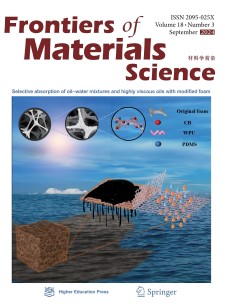Biomimetic mineralization synthesis of cobalt-doped magnetoferritin for enhancing magnetic hyperthermia
Abstract
Magnetic hyperthermia therapy (MHT) has emerged as a promising noninvasive approach for tumor treatment. However, the clinical translation of MHT has been significantly hampered by two critical challenges: insufficient magnetothermal conversion efficiency and compromised biosecurity of conventional magnetic nanoparticles. Addressing these limitations, we developed an innovative biomimetic synthesis strategy by engineering cobalt-doped magnetoferritins (PcFn-Co-x) within recombinant hyperthermophilic archaeon ferritin (PcFn) cages at a precisely controlled biomineralization temperature of 90 °C. This breakthrough approach yielded monodisperse PcFn-Co-x nanoparticles with core sizes (13.3–19.6 nm) that remarkably surpass the conventional size limitations of ferritin inner cages. The optimized PcFn-Co- 5 nanoparticles demonstrated unprecedented magnetothermal performance, achieving a record-high specific absorption rate (SAR) of 910 W·g-1 under biologically safe excitation conditions (33 kA·m-1 and 150 kHz). Magnetic characterization revealed that the cobalt doping significantly modulates the magnetic energy barrier by enhancing coercivity and magnetic anisotropy, with SAR values showing a remarkable positive correlation with these magnetic parameters. This work presents a novel paradigm for the biomimetic synthesis of high-performance magnetoferritins and pave the way for their clinical application in MHT.

 求助内容:
求助内容: 应助结果提醒方式:
应助结果提醒方式:


